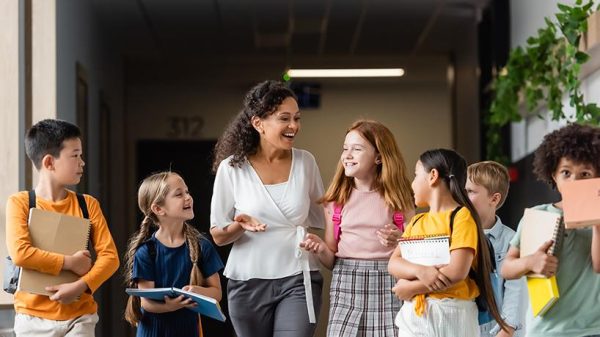If we only knew then what we know now, we would have led change on our campuses in a much different way. Since then, we have come to understand deeply Learning Forward’s Standards for Professional Learning, tools for change (such as the development of a clear vision, KASAB, a theory of change, a logic model, and a way to evaluate the work), and how to remain in a cycle of continuous improvement.
As district leaders, we are committed to supporting principals to become lead learners on their campuses and, in the process, we have come to realize that, as principals ourselves, we took a hit-or-miss approach to school improvement.
It is apparent to us now how inconsistently we engaged in a cycle of continuous improvement with our staff — sometimes researching, sometimes looking at data, but never really completing a cycle of continuous improvement. We were far from the repetition of a cycle, which we now know yields the most positive student results. Void of the tools for change, we struggled as principals to put the pieces together in a consistent effort toward improvement.
As district leaders, we have immersed ourselves in understanding these tools and are engaging campus leaders in this learning. Looking back, we realize how much we lacked clarity and vision around the notion of leading change for school improvement. We often randomly selected the “next best thing” in hopes this would change our student outcomes.
That may sound bad to you, but, in all reality, we were viewed as successful principals in a very successful school district. We saw students learning and experiencing success, teachers growing professionally, and schools with healthy cultures. We were not bad principals. Maya Angelou once said, “I did then what I knew how to do. Now that I know better, I do better.” She was a smart woman.
Fast-forward to our work with Galveston County Learning Leaders. In our new roles as district leaders, we were charged with learning about the Standards for Professional Learning and tools for change and helping our campus administrators see why these are essential to leading second-order change on their campuses. No longer do our actions seem random, but instead systemic and purposeful. Although we were viewed as effective principals, we know now how much we were missing the mark.
Now that we know better, we do better. As district leaders, we work with campus leaders in communities of practice to learn about leading, hone their skills, and remain in a cycle of continuous improvement. While working with a community recently, we discussed student agency and ownership of learning. We talked about the potential steps we might go through as leaders to learn about student agency to then facilitate our teacher growth.
Paul House, a high school principal, said, “So this is about me as a learner first, then I engage the staff.” This was the first time he considered the idea that his learning, as a leader, is paramount to enact change. We no longer have principals figuring it out on their own. We now have a district system to support our principals in becoming lead learners.
Galveston County Learning Leaders is a three-year initiative funded by a grant from Houston Endowment to Learning Forward. The goal of the project is to improve professional learning and leadership across the county by supporting Galveston County superintendents, their leadership teams, and selected principals in a community of practice and professional learning seminars.
This post originally appeared in Learning Forward’s PD Watch.







